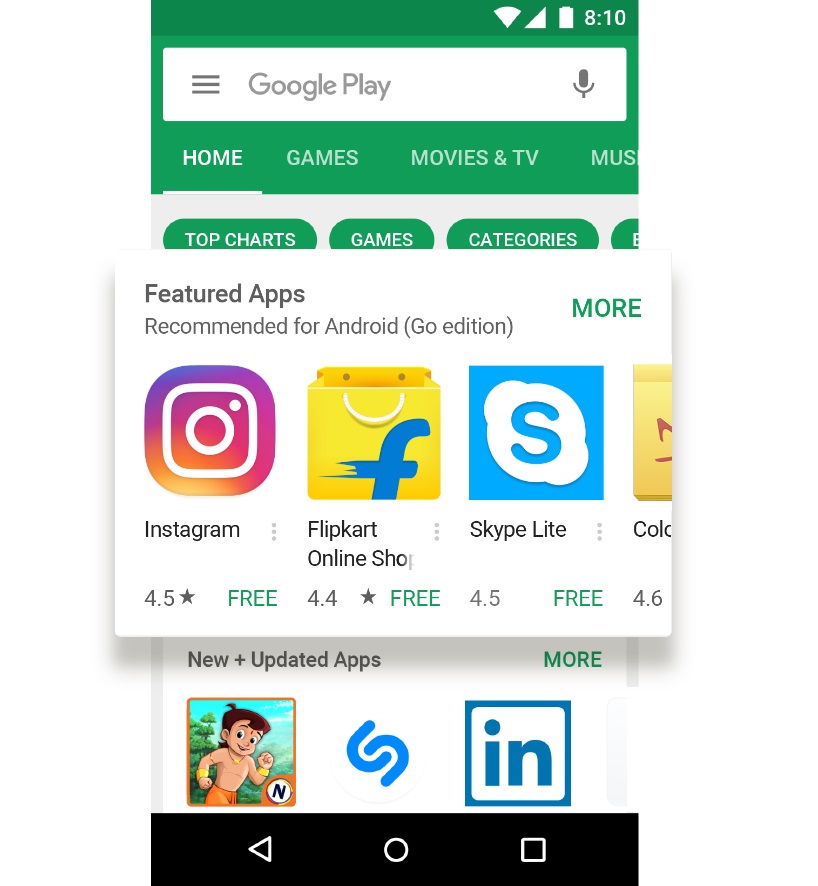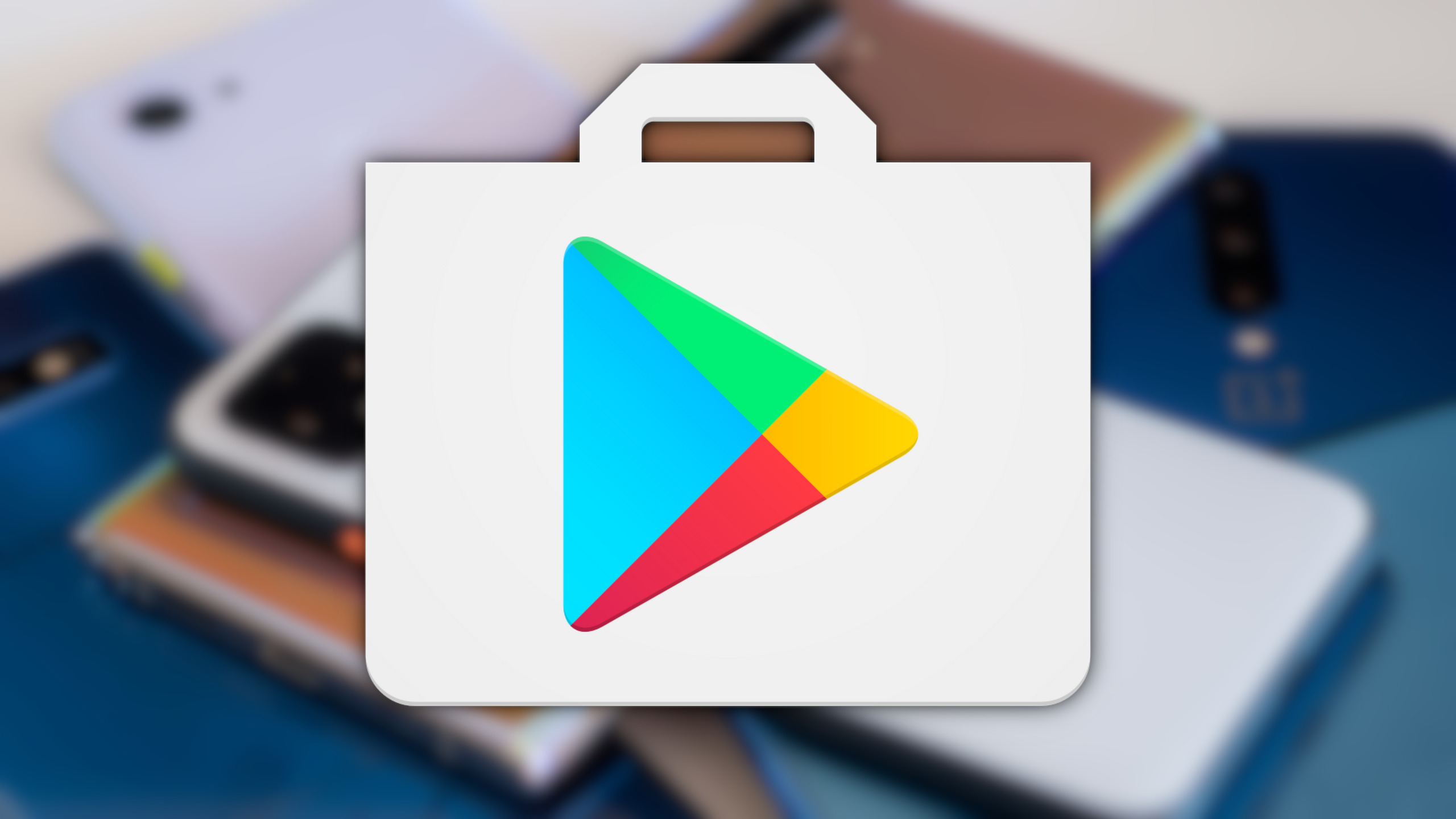This guide is for publishers who want to monetize an Android app withAdMob and aren't using Firebase. If you plan toinclude Firebase in your app (or you're considering it), see the AdMobwith Firebase version ofthis guide instead.
- Alternative App Stores For Android
- Download Android App Store Application
- Android App Store Apple Tv
- Best Android App Store App
- Android App Store For Pc
Integrating the Google Mobile Ads SDK into an app is the first step towarddisplaying ads and earning revenue. Once you've integrated the SDK, you canchoose an ad format (such as native or rewarded video) and follow the steps toimplement it.
Prerequisites
- Use Android Studio 3.2 or higher
minSdkVersion16 or highercompileSdkVersion28 or higher
Aug 25, 2020. Online shopping from a great selection at Apps & Games Store. Online shopping from a great selection at Apps & Games Store. Skip to main content.us Hello, Sign in. Featured Fire Tablet Apps and Games See more Fire tablet apps and games Previous page. TODAY NBC News Digital LLC Free Download.
- Recommended:Create a Google AdMob accountand register an app.

- The Google Play Store (originally the Android Market), operated and developed by Google, serves as the official app store for the Android, allowing users to download apps developed with the Android software development kit (SDK) and published through Google. The store offers both free and paid apps.
- Play Store Lets you download and install Android apps in Google play officially and securely. It’s Google’s official store and portal for Android apps, games and other content for your Android-powered phone or tablet. Google Play is the heart of the Android OS. Without it, a.
Import the Mobile Ads SDK
Note: You should begin with a new project in Android Studio and check thebox to Use AndroidX Artifacts or refer toMigrating to AndroidX tomigrate your project.Apps can import the Google Mobile Ads SDK with a Gradledependency that points toGoogle's Maven repository. First, make surethat google() is referenced in the allprojects section of yourproject-level build.gradle file.
Example project-level build.gradle (excerpt)
Next, open the app-level build.gradle file for your app, and look fora 'dependencies' section.
Example app-level build.gradle (excerpt)
Add the line in bold above, which instruct Gradle to pull in the latestversion of the Mobile Ads SDK and additional related dependencies. Once that'sdone, save the file and perform a Gradle sync.
Update your AndroidManifest.xml
Add your AdMob App ID to your app'sAndroidManifest.xml file by adding a <meta-data> tag with name com.google.android.gms.ads.APPLICATION_ID, as shown below.
You can find your App ID in the AdMob UI. For android:value insert yourown AdMob App ID in quotes, as shown below.
 This step is required as of Google Mobile Ads SDK version 17.0.0.Failure to add this
This step is required as of Google Mobile Ads SDK version 17.0.0.Failure to add this <meta-data> tag results in a crash with the message:The Google Mobile Ads SDK was initialized incorrectly.Initialize the Mobile Ads SDK
Before loading ads, have your app initialize the Mobile Ads SDK by callingMobileAds.initialize()which initializes the SDK and calls back a completion listener onceinitialization is complete (or after a 30-second timeout). This needsto be done only once, ideally at app launch.
 Warning: Ads may be preloaded by the Mobile Ads SDK or mediation partner SDKsupon calling
Warning: Ads may be preloaded by the Mobile Ads SDK or mediation partner SDKsupon calling MobileAds.initialize(). If you need to obtain consent from usersin the European Economic Area (EEA), set any request-specific flags (such astagForChildDirectedTreatment or tag_for_under_age_of_consent), or otherwisetake action before loading ads, ensure you do so before initializing the MobileAds SDK.Here's an example of how to call the initialize() method in an Activity:
Example MainActivity (excerpt)
If you're using mediation, wait until the completion handler is called beforeloading ads, as this will ensure that all mediation adapters are initialized.
Alternative App Stores For Android
Select an ad format
The Mobile Ads SDK is now imported and you're ready to implement an ad.AdMob offers a number of different ad formats, soyou can choose the one that best fits your app's user experience.
Banner
Rectangular ads that appear at the top or bottom of the device screen.Banner ads stay on screen while users are interacting with the app, and canrefresh automatically after a certain period of time. If you're new to mobileadvertising, they're a great place to start.
Interstitial
Full-screen ads that cover the interface of an app until closed by the user.They're best used at natural pauses in the flow of an app's execution, such asbetween levels of a game or just after a task is completed.
Native
Customizable ads that match the look and feel of your app. You decide how andwhere they're placed, so the layout is more consistent with your app's design.
Rewarded
Ads that reward users for watching short videos and interacting with playableads and surveys. Good for monetizing free-to-play users.
Apps & Games on Google Play are adopting a new icon system to better fit diversedeveloper artwork to Google Play's various UI layouts, form factors, anddevices, as well as to bring consistency and a cleaner look to Google Play.
Uniformed shapes are visually more appealing and easier to digest. They helpusers focus on the artwork, as opposed to the shape. They fix alignment issuescaused by random open space to better present surrounding information, such asthe title, rating, and price.
This page describes the guidelines you should follow when creating assets foryour app's listing on Google Play. For example, because Google Play dynamicallyrenders rounded corners and drop shadows for your app icons, you should omitthem from your original assets.
Important: If instead you're interested in learning more about creating APKlauncher icons, which are separate from the Google Play icons described on thispage, see the resources below:
- Android Adaptive Icons
Follow these APK icon guidelines to learn how to create adaptive launchericons introduced in Android 8.0 (API level 26). - Product icons
Discover Material Design principles for product icons, including guidelinesfor icon design, shapes, specs, and treatment.
Creating assets
This section describes some guidelines you should follow when creating visualassets for your app on Google Play.
Attributes
Icon artwork can populate the entire asset space, or you can design and positionartwork elements such as logos onto the keyline grid. When placing your artwork,use keylines as a guideline, not a hard rule.
When creating your artwork, ensure it conforms to the following:
- Final size: 512px x 512px
- Format: 32-bit PNG
- Color space: sRGB
- Max file size: 1024KB
- Shape: Full square – Google Play dynamically handles masking. Radius will beequivalent to 20% of icon size.
- Shadow: None – Google Play dynamically handles shadows. See 'Shadows' sectionbelow on including shadows within your artwork.
After the asset is uploaded, Google Play dynamically applies the rounded maskand shadow to ensure consistency across all app/game icons.
Sizing
Utilize the full asset space as the background when dealing with minimalisticartwork.
Use the keylines as guides for positioning artwork elements (i.e. logos).
Don't force your logo or artwork to fit the full asset space. Instead, utilizethe keyline grid.
Download Android App Store Application
Illustrated artwork typically works well as a full bleed icon.
Shadows
Google Play will dynamically add a drop shadow around the final icon onceuploaded.
When adding shadows inside your icon artwork, consider consistency with theAndroid platform by following Google Material guidelines.
Corner radius
Google Play dynamically applies corner radius. This ensures consistency when theicon is resized across different UI layouts. Radius will be equivalent to 20% oficon size.
Badges
Embedded badges take away from the artwork itself and don't scale down well withthe icon.
Brand adaptation
If shapes are a critical part of a logo, do not force the artwork to full bleed.Instead place it on the new keyline grid.
If possible, pick a background color for your asset that's appropriate for yourbrand and doesn't include any transparency. Transparent assets will display thebackground color of Google Play UI.
If there is no distinct shape around a logo defining it, place it on a fullbleed background.
If your artwork is flexible enough, consider tweaking it to fully utilize theasset size. If that's not possible, revert to placing the logo on a keylinegrid.
Legacy mode
Original icon assets that have not been updated per the new specifications willeventually be migrated to legacy mode and scaled down 75% to the keyline gridsize (512 * 0.75 = 384px).
Uploading an icon per the original specification will not be allowed as of May2019. See more details on timelines.
Android App Store Apple Tv
Instructions for API users
Migration dates are slightly different for API users, but achieve the same endresult of migrating all icons to either the new specification or 'legacy mode'by June 24, 2019.
Before June 17, 2019, developers must use the Play Console to apply the newspecification to their icons. All calls to Edits.images: uploadwill apply whichever specification is configured in the Play Console. There isno way to apply the new specification via API. The Edits.images: upload callmay error if the old specification is still applied, and the errormessage for that specific icon will point you to this specification. Afterapplying a new specification using the Play Console, you can retry theEdits.images: upload call. You may need to retry the call multiple timesbefore it will succeed.
Beginning on June 17, 2019, all API calls to Edits.images: upload willautomatically apply the new specification to the icon. Following June 17, 2019,you should only upload icons that are compatible with the new specification.
Best Android App Store App
Download design templates & resources
To get started, download one of the provided asset templates:
Android App Store For Pc
- Sketch template (.sketch)
- Illustrator template (.ai)
- Photoshop template (.psd)
